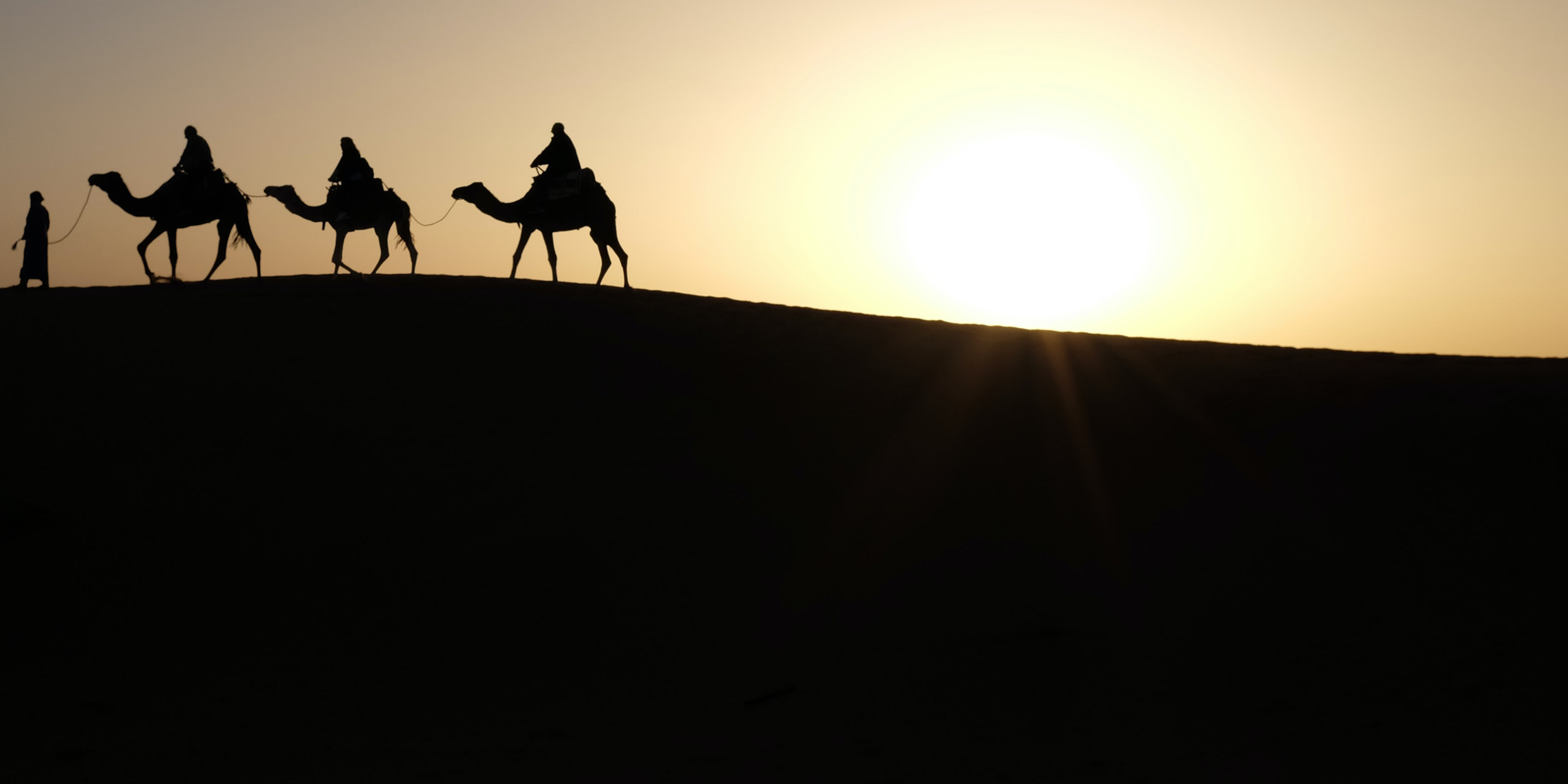Originally published 20 December 1999
“We have seen his star in the east, and are come to worship him,” the Magi tell King Herod in Matthew’s gospel. And when they depart the king’s palace, “Lo, the star which they saw in the east, went before them, till it came and stood where the young child was.”
The tale of the Star of Bethlehem has inspired Christians at this season down through the ages. Astronomers, too, have been intrigued. Every year at this time we have a flurry of theories as to what the Star might have been. True to the scientific spirit, astronomers generally dismiss the notion that the Star was a true miracle, something outside the natural course of events.
In his famous Renaissance painting of the Adoration of the Magi, Giotto showed the star as a comet, most likely the comet that came to be associated with the astronomer Halley. Comet, nova, supernova, meteor, planetary conjunction, Venus: There is no shortage of candidates for what the “star” might have been.
This year we have two new books on the Star of Bethlehem, from major university presses.
British astronomer Mark Kidger (The Star of Bethlehem: An Astronomer’s View, Princeton, 1999) examines the historical evidence for the most likely time of Christ’s birth, and settles on spring of the year 5 B.C. He then considers all of the likely candidates for the Star, and offers his own best guess: A nova recorded by Chinese and Korean astronomers in 5 B.C., preceded by a series of unusual planetary configurations.
American physicist Michael Molnar takes an original approach to the Star (The Star of Bethlehem: The Legacy of the Magi, Rutgers, 1999). The Magi were more likely astrologers than astronomers, he argues. They would have been drawn to Judea by a portent with astrological significance, not just by some bright object in the sky. He settles on an occultation, or eclipse of Jupiter by the moon that occurred in the constellation Aries on April 17, 6 B.C. The Star can only be understood within the context of ancient astrology, says Molnar, particularly the art of casting of regal horoscopes.
All of this is great fun to read, but it may be beside the point.
First, there is the problem that no one is exactly sure when Christ was born. Most historians opt for a date sometime between 4 and 8 B.C., but we may never know the precise time. Until we do, all speculation about the Star must be tentative.
It is also possible that the Star is a fiction, invented by Matthew or his contemporaries to inflate the story of the Savior’s birth. In which case, astronomical or astrological speculations are irrelevant.
And finally, our fascination with the Star may be telling us more about ourselves than about the first Christmas. We are a people so hungry for miracles that we often miss the wonder of the commonplace.
Let’s forget for the moment the princely Magi, and imagine ourselves with the common shepherds who watched their flocks by night. Let’s pick a not unreasonable date for the birth of Christ: March 22, the spring equinox, in the year 5 B.C. With my Starry Night Pro computer software, we can watch with the shepherds.
A waxing gibbous moon, near the star Spica in Virgo, has just risen as the sun sets. As the sky darkens, Venus and Jupiter add their brilliance to a dazzling array of winter stars in the west: Aldebaran, the Pleiades, Capella, Sirius, Procyon, the Gemini twins and the stars of Orion. Keen eyed shepherds can just make out the Little Cloud in Cancer.
At about 9 o’clock in the evening, Mars rises with Antares in Scorpio, two red objects climbing the sky together. The Milky Way lies low on the southern horizon, like a misty haze, and in the haze, visible from the hills of Judea, the stars of the Southern Cross stand vertical on the horizon.
As the night progresses, the hazy light lifts from the southern horizon until it arches high from southwest to northeast, a luminous bridge across the sky. By midnight, Vega, Deneb, and Altair, the brightest stars of summer, are visible in the northeast, promising richer forage for the flocks. The moon, which has sailed all night across the sky like a ship with billowing sail, sets just before the dawn.
Nothing particularly exceptional about this night, but we watch with wonder, awe, and perhaps a frisson of terror. This night, like every night, is a revelation for those with eyes to see. No heavenly choir can possibly add to the grandeur of the universe itself.
The message of that first Christmas night — Glory to God in the highest, and on earth peace, good will toward men — is there to be heard on any clear night, in heavens that declare the Glory, year in and year out, millennium after millennium, for Christians and non-Christians alike. And that’s what is wrong with all the fuss about the Star of Bethlehem: We can spend so much time searching for what might have been that we become oblivious to the continuing miracle of what is.



